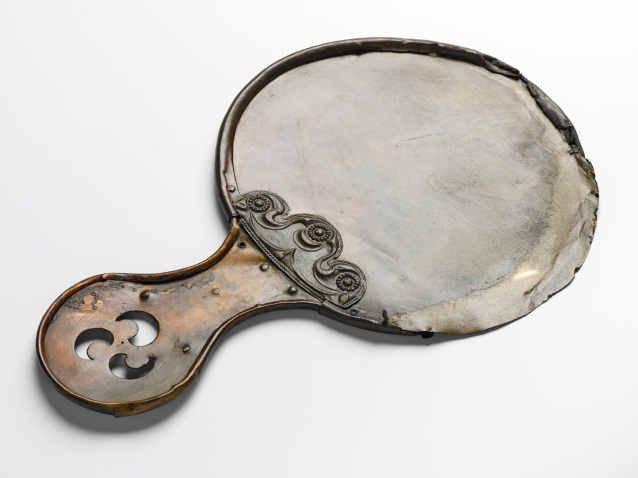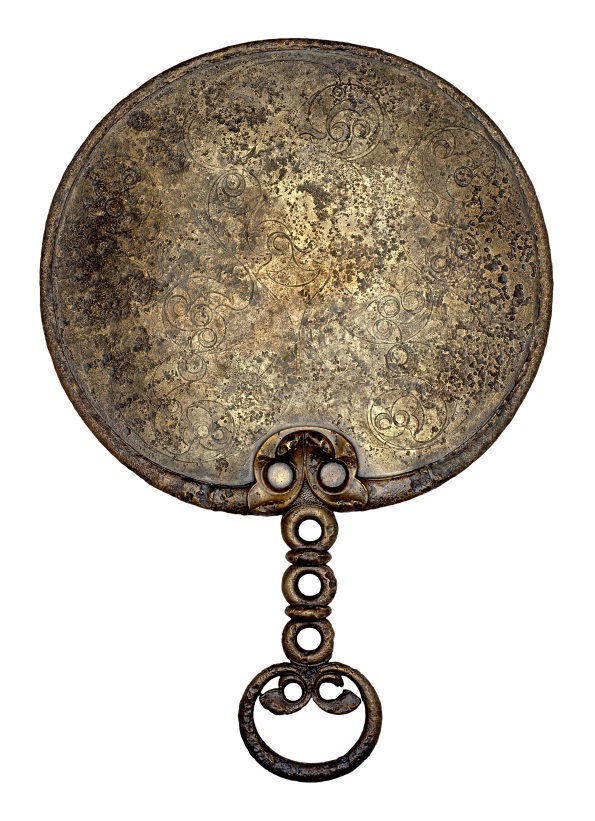
Tuesday 24 May – Saturday 27 August 2016, Archaeology Gallery
This display of two Iron Age mirrors is touring to regional museums across the United Kingdom in conjunction with a major exhibition on Celts, first shown at the British Museum in London and now showing at the National Museum of Scotland in Edinburgh.
Metal mirrors with a polished reflective surface on one side and swirling Celtic art designs on the reverse were first made around 100BC. Celtic art acted to mark out powerful objects in the Iron Age, and versions of these styles have been key to reflecting people’s identities right up to modern-day Britain. The two mirrors in the tour tell very different stories. They reveal both similarities and local differences which help us to understand the relationships between communities across Britain 2,000 years ago.
The British Museum’s Holcombe mirror, from Devon, south-west England, was uncovered during the excavation of a Late Iron Age settlement which lay beneath a Roman villa. The back of the mirror is engraved with a stunning looped design which perfectly balances engraved motifs with empty space. This was a new style of Celtic art which developed in southern Britain as communities here were coming into closer contact with the Roman world.
National Museums Scotland’s mirror was discovered at Balmaclellan in Kirkcudbrightshire, south-west Scotland. It was part of a hoard of metalwork  wrapped in cloth parcels which was
wrapped in cloth parcels which was
placed in a bog, perhaps as an offering to the gods. Unlike the English mirror, both faces were smooth for reflecting. Decoration is confined to the handle, the shape of which is modelled on Roman vessel handles.
The Reflections on Celts tour is generously supported by the Dorset Foundation.

The major joint exhibition telling the story of Celts is showing at the National Museum of Scotland:
Celts
National Museum of Scotland
10 March – 25 September 2016

